TemariKai ToolKit - Nejiri Mitsubane 捻 り三羽 根
Mitsubane means a combination of 2 Japanese words, three and leaf. Nejiri means twist, as to interlock. Therefore, this stitch
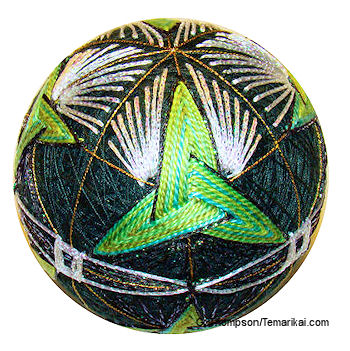 translates
as Twisted Three Leaves. Each point (leaf) is worked so as to interlock
with the others. Given that the entire sequence is worked with one
thread, it also is in the hito
hude gake (one-stroke, continuous) class of stitches. As with most
stitches, nejiri mitsubane can be the focus of the design; it also is a
candidate for smaller areas that need detail. The number of rounds of
the leaves (points) and the distance from the pole (length of the
points) will be determined by the actual design/pattern you desire or
are following.
translates
as Twisted Three Leaves. Each point (leaf) is worked so as to interlock
with the others. Given that the entire sequence is worked with one
thread, it also is in the hito
hude gake (one-stroke, continuous) class of stitches. As with most
stitches, nejiri mitsubane can be the focus of the design; it also is a
candidate for smaller areas that need detail. The number of rounds of
the leaves (points) and the distance from the pole (length of the
points) will be determined by the actual design/pattern you desire or
are following. 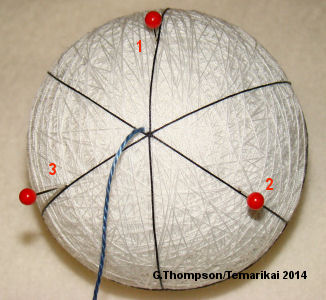 |
Place pins on lines 1, 2 and 3 to mark the started length of the points. Anchor a working thread and bring it up just to the left of line 1, at the center (about a thread-width away from center point and line). Turn the ball so that line 2 is at 12 o'clock and take a stitch on the far side of the pin (towards equator). |
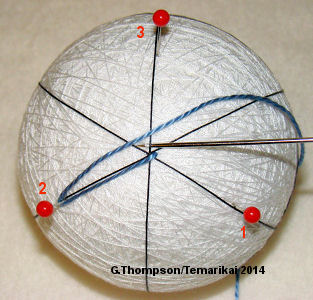 |
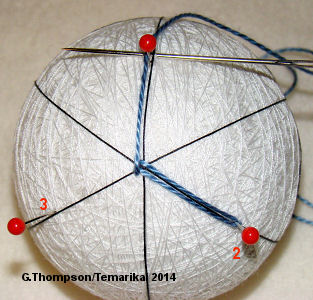 Turn the mari so that line 3 is at the top; take a stitch close to the center (about a thread-width out). Turn the ball again so that line 1 is at 12 o'clock and take a stitch on the far side of the pin. |
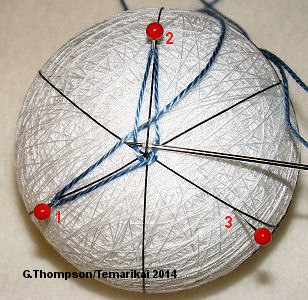 |
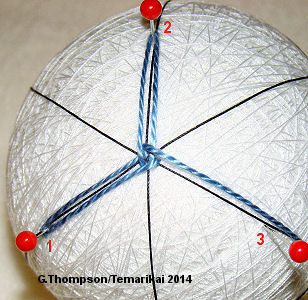 Turn the ball so that line 2 is at 12 o'clock. Carefully separate the 2 threads just enough to be able to take a stitch in between them. Spacing is the same as before, about a thread width out from the center. Turn the ball and take a stitch on the far side of pin 3. |
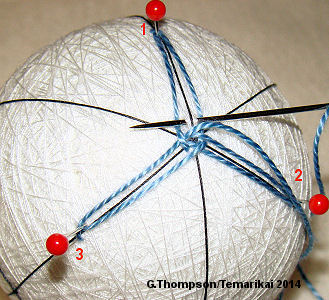 |
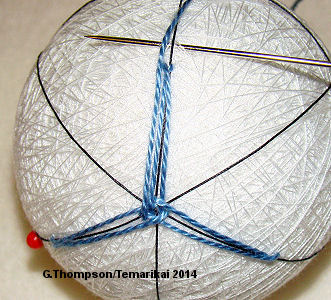 Turn the ball, and take a stitch at the center, in between the threads at line 1. Remove the pins other than line 1, as a round-counter mark. Turn the ball and take a stitch at the point, remembering to stretch the stitch. |
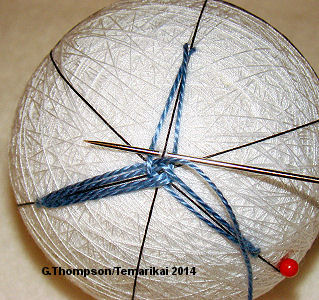 |
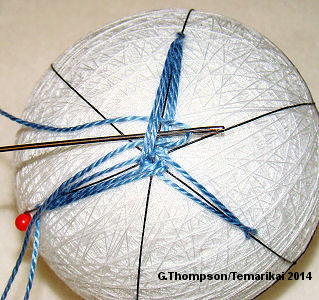 With this and each succeeding round, the thread will be passed under those of previous rounds as the thread is carried to the center stitches. This is what creates the "twisted", or interlocked, style of the stitch. Continue as above, remembering to pass the thread under the left half of the emerging points (leaves). |
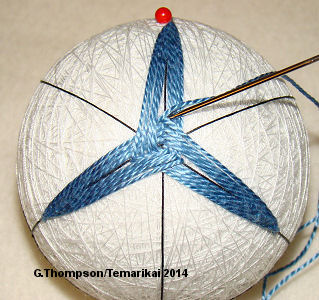 |
Continue for the required number of rounds as deemed in the
pattern. Take care to end with a completed round, which will
mean in the center. |
This
is a TemariKai.com Printable Page; © 2014, all rights reserved.
Right click to print one copy for personal use.
Last updated 11/2015 © 1998 - 2015 G. Thompson/PuffinStuff, Inc.
